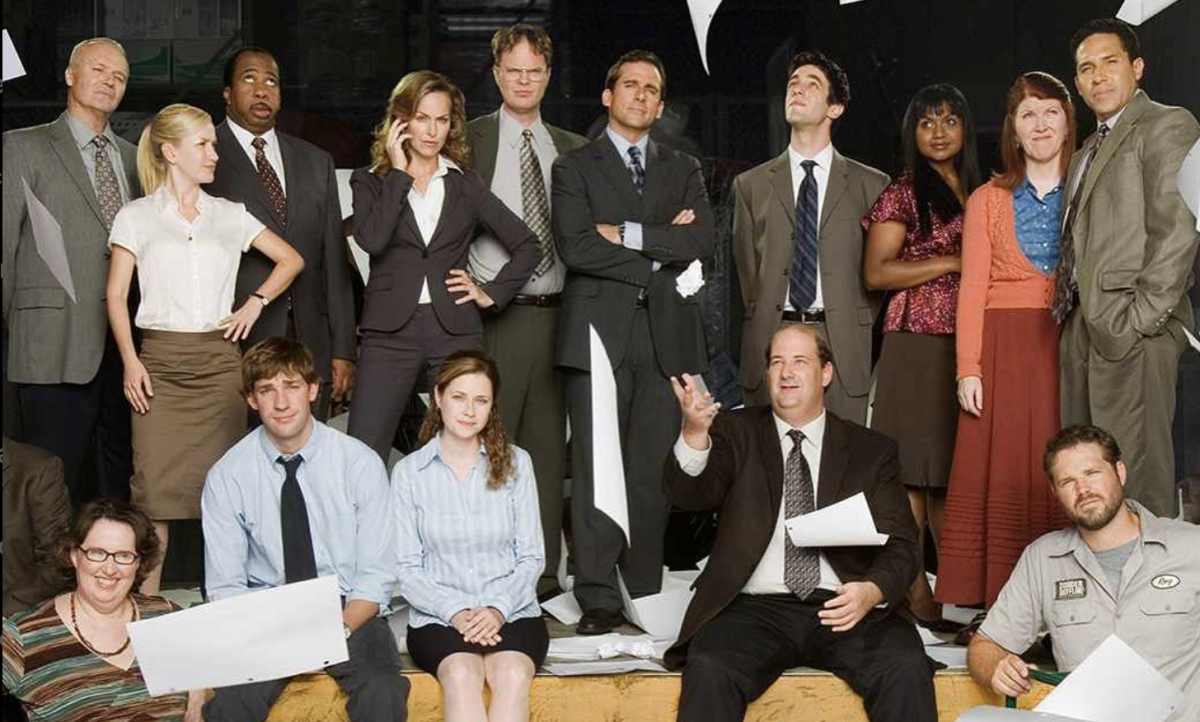Now more than ever, many television shows drag on forever, deteriorating significantly over time. Whether it’s a sitcom, medical drama or any other type of TV production, no show can escape the seasonal rot — when a show decreases in quality due to continuous and excessive production. While well-rounded and consistent television is becoming somewhat of a lost art, it’s not too late for producers to start prioritizing quality over quantity.
As producers create more seasons of their show, they respond to what audiences like to keep ratings up. When fans fixate on the traits that make each character unique, producers are incentivized to exaggerate those traits to fit fans’ expectations. As a result, characters slowly become increasingly hyperbolic and oversimplified caricatures of themselves.
This process is known as “Flanderization.” The term originates from the character Ned Flanders in “The Simpsons,” who went from a friendly, good-faith Christian neighbor to a stereotypical religious zealot as the show progressed through its 36 seasons.
Flanderization can be seen throughout many popular shows, most infamously in NBC’s “The Office” during its nine-season run. “The Office” was initially supposed to be a show about finding humor in the mundane, and its first few seasons delivered an entertaining but grounded take on dull office life. The dreary mood of the show’s setting forced its characters to search for meaning in their dead-end lives working for Dunder Mifflin, a run-of-the-mill paper company. As the show progressed, however, the realistic set of characters became outright cartoonish.
Kevin Malone, an accountant for Dunder Mifflin, was introduced as a clumsy man with an awkward demeanor. Six seasons later, writers morphed Kevin into an absurdly dumb, gluttonous and unrealistically childlike individual with no place in any realistic office setting. Sales rep Phyllis Lapin-Vance suffered a similar fate, going from a timid, older woman to a vessel for sex-related shock humor. “The Office” was meant to thrive off of awkward moments and ordinary small victories, but the characters’ evolution ruined the semi-realistic interpretation of the corporate world that made the show so unique.
Almost every long-running show is guilty of Flanderization. In the sitcom “Friends,” protagonist Joey Tribbiani devolved from a lovable, slightly dim ladies’ man into an almost childlike buffoon by the show’s final seasons. Even children’s shows like “Spongebob Squarepants” aren’t immune to Flanderization. Mr. Krabs goes from a money-loving businessman to an apostle of greed, and Spongebob’s sidekick, Patrick, is dumbed down to the point where he can barely perform basic tasks.
Another telltale sign that a series has run too long is when it “jumps the shark” — when a show desperately introduces an absurd or outlandish plotline to keep viewers interested.
This trend becomes apparent in long-running shows like ABC’s Grey’s Anatomy, which currently has a whopping 438 episodes. During its earlier seasons, the series thrived off realistic character development, quippy comedy and meaningful interpersonal relationships. As time passed, the show ditched its character-driven plot and became a repetitive soap opera fueled by sensationalism. Around Season 8, the show became infamous for excessive catastrophes and over-the-top conflicts. The main characters were killed off by everything from hospital shootings to plane crashes. At one point, a main character has sex with their dead partner’s ghost. These absurd plotlines alienated the very viewers who once connected with the show’s grounded storytelling.
Growing audience disapproval reflects the declining quality of long-running shows. Grey’s Anatomy’s first season received an 83% audience rating on Rotten Tomatoes, while its 18th, 19th and 20th season ratings dropped to 46%, 56% and 44%, respectively.
Long-running shows often feature several cast changes, leaving viewers struggling to stay invested in the storyline. In cases like “The Office” and “Suits,” the actors for the respective protagonists, beloved manager Michael Scott (Steve Carell) and lawyer Mike Ross (Patrick J. Adams), left in season 7, making the remaining two seasons of each show feel like an afterthought.
It doesn’t have to be this way. Many popular shows deliver consistent quality from start to finish, even in genres that normally fall victim to the pitfalls of overproduction.
“The Good Place” is an example of one of these shows. Its 53-episode runtime was just enough for both its narrative and characters to develop. Instead of watching the show fizzle out, viewers got to experience a heartfelt and fulfilling narrative ending and multiple masterfully completed character arcs. The average Rotten Tomatoes audience and critic score for “The Good Place” are 89% and 97%, respectively.
Compared to the length of other sitcoms, such as the 781 episodes of “The Simpsons” or the 279 episodes of “The Big Bang Theory,” it’s easy to see how the producers of “The Good Place” were rewarded for their production choices despite forsaking the length of their show.
Television shows don’t need to force more seasons to make a lasting impact. Instead of resorting to bizarre plot developments, cast changes and Flanderization, producers should focus their time and energy on creating fulfilling shows, even if that means ending their productions early. When producers realize their show is losing momentum, they should focus on crafting a powerful conclusion that aligns with the show’s original vision. The hallmark of a successful show isn’t how long it runs — it’s how well audiences remember it.
















